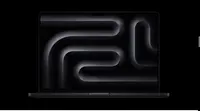6 Ways to Improve a MacBook's Speed
MacBooks are one of the best when it comes to excelling in the overall performance. However, similar to other devices, Macs are no exception when it comes to performance drop over time.
Sooner or later, you are bound to notice a sluggishness on your device. Regular maintenance plays a big role in prolonging a solid computer's performance, but not every user is willing to put in the necessary effort.
If your Mac is old, you may have no other option but to sell it while it still has some value and use that money for a replacement.
On the other hand, your MacBook might not be beyond saving. There are multiple things you can do to try and fix the Mac before giving up on it. Let’s see what those things are.
1. Work on Freeing Up Storage
Insufficient storage on the disk is one of the main reasons why a computer becomes sluggish over time.
Not deleting files that accumulate leads to too much digital clutter. And it’s not large and easily noticeable files like applications or video games that are the culprits.
Temporary storage like app extensions, cache, and even old backups may be the biggest reason why there are only a few gigabytes of free space left on the MacBook’s drive.
In the case of temporary storage, it’s tricky to solve that because you need to tinker with the system settings. Besides, deleting files manually might lead to some accidents, such as removing a file you shouldn’t have.
It’s recommended to learn how to run disk cleanup on Mac. Ideally, you should have a cleanup tool that specializes in dealing with temporary storage. You can run the cleanup on a regular basis and minimize the clutter on your devices.
2. Clean the Dust Inside
Overheating and loud noises usually indicate that there is too much dust inside the laptop. Some people try to solve the problem by getting a cooling pad. The accessory offers value, but you can’t expect it to solve the root cause of the issue.
The priority is to open up the MacBook and clean all the dust and other particles. Since the process is intricate, you don’t want to risk doing the job yourself.
Instead, find someone who specializes in cleaning laptops, or MacBooks, specifically. It’s better to leave such a task in the hands of a professional. Taking the Mac apart and cleaning it yourself might lead to damaging the hardware.
3. Scan for Malware
Despite the fact that macOS is not as prone to cybersecurity threats as other operating systems, you still risk potential issues related to malware and other cyber threats.
Use antivirus software to scan the MacBook to make sure that it is malware-free. In case the scan shows corrupted data, don’t hesitate and get rid of it. The longer infected files stay on the device, the worse it will get.
If you don’t trust antivirus software as a concept, look for other ways to protect your security and privacy on the internet.
For example, you could switch to a different and more secure browser or get a virtual private network and use it not just for public Wi-Fi but your home network.
4. Check Backgrounds Apps
Open Activity Monitor and sort processes by resource consumption. There might be some background applications that are there because you forgot to close them. Or, alternatively, you have too many items in the startup item list.
Each time you boot a computer, an application launches and runs in the background. Even if idle, an application consumes system resources, slowing down the MacBooks’ speed.
Take some time to go through the application list on Activity Monitor and look for apps that seem out of place. Get down to the bottom of the problem. If it’s part of the startup item list, remove it. And if it’s a random app you forgot to close, treat it as a reminder that you should always close the MacBook applications properly.
5. Upgrade Hardware
One of the biggest downsides of Macs is that they are not flexible enough in the hardware upgrade department.
Once you spend your money, you are pretty much stuck with the integrated hardware. There are some exceptions, as certain models allow for additional memory.
Another instance of an upgrade, or rather a change, is to connect an external GPU. Or, if you want, you can make the most out of external storage accessories like hard drives and USB flash sticks to reduce the load on the internal Mac drive.
6. Reinstall the Operating System
Sometimes, giving the device a clean slate is the best course of action. Reinstall the operating system and get rid of all the clutter holding the MacBook’s performance.
Before you do, however, make sure to back up data via iCloud or an external hard drive. You don’t want to lose files to a wipe that happens after reinstalling the operating system.










Post your comment